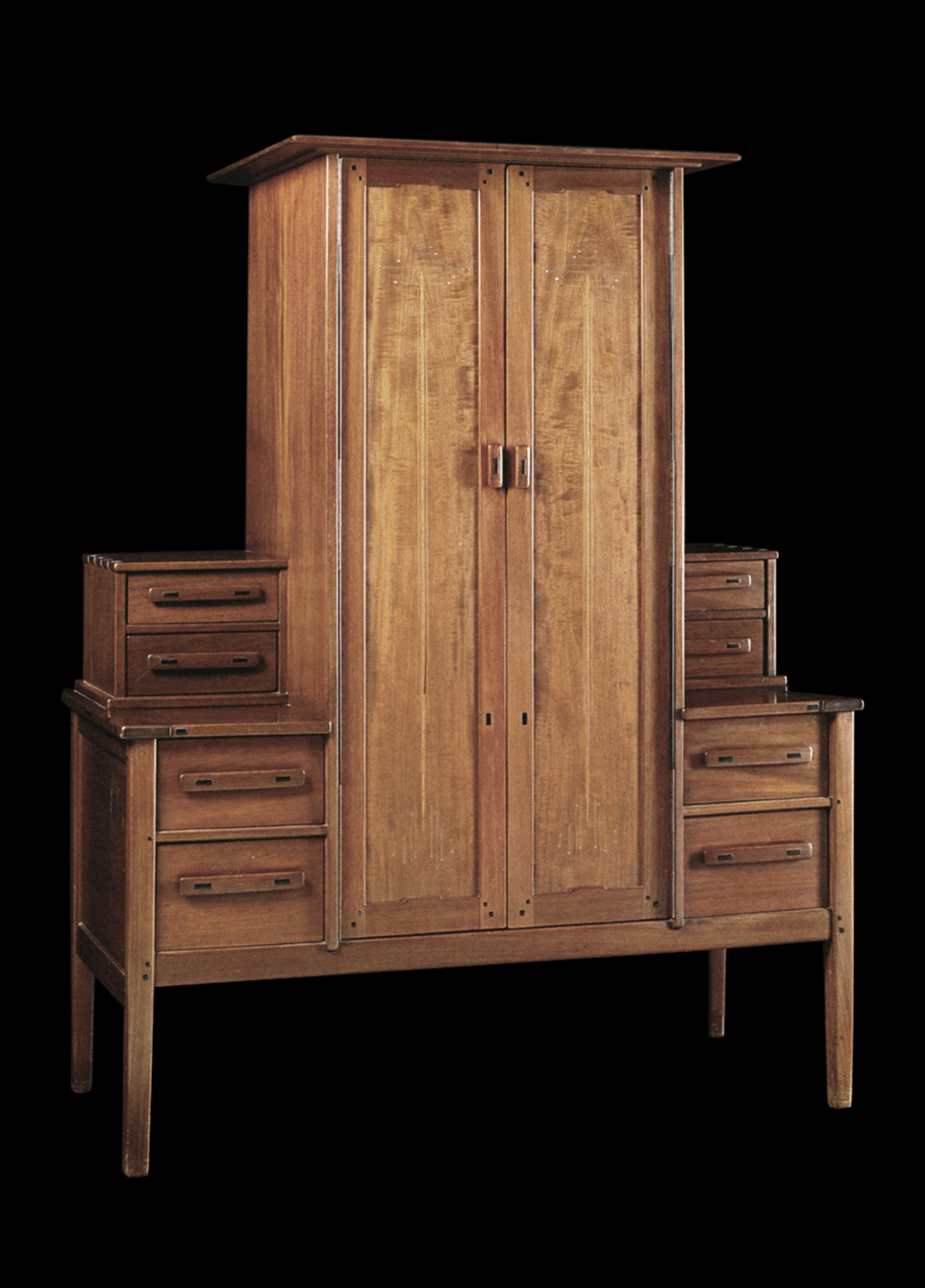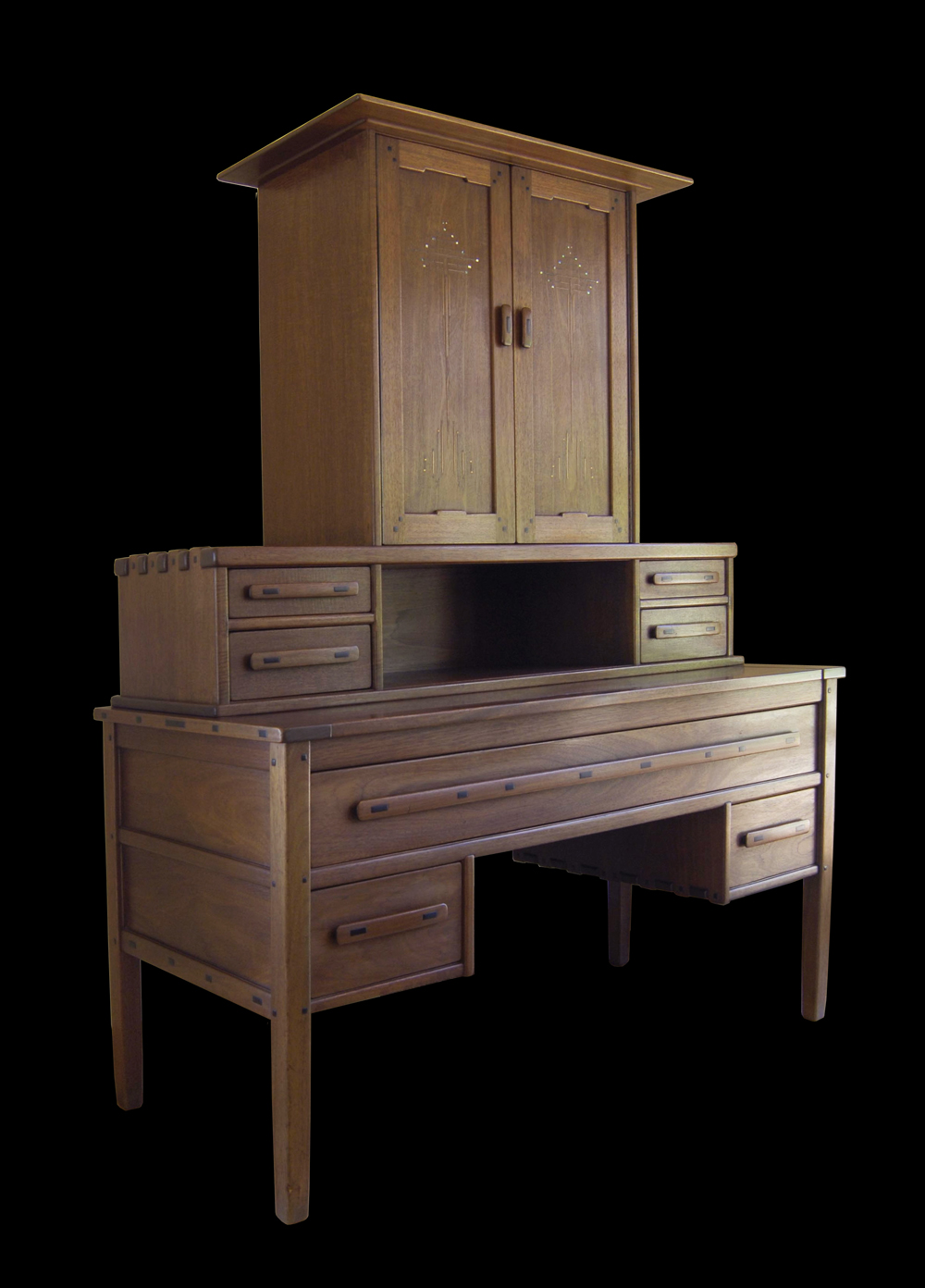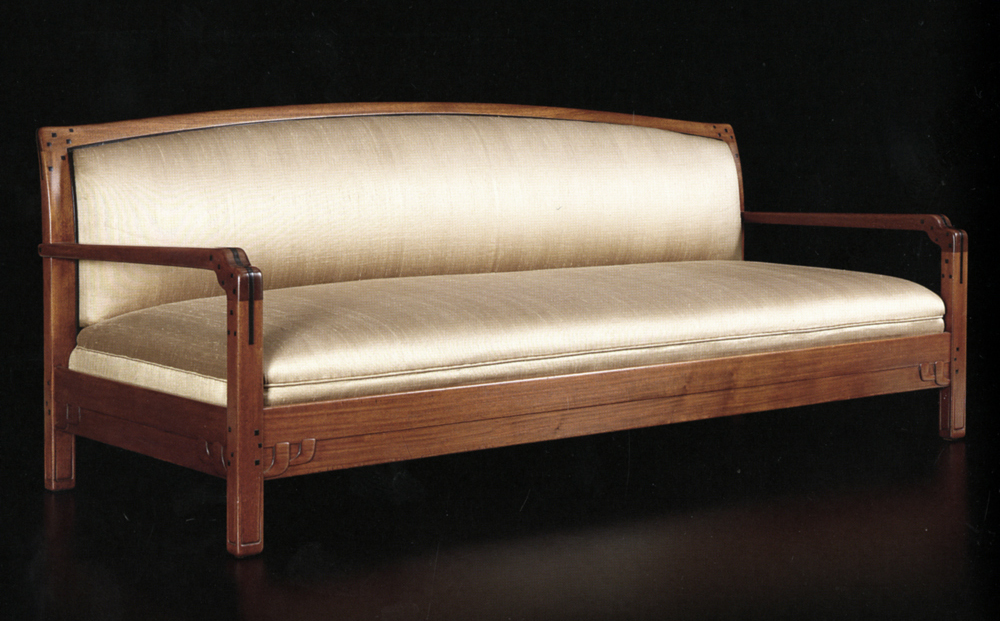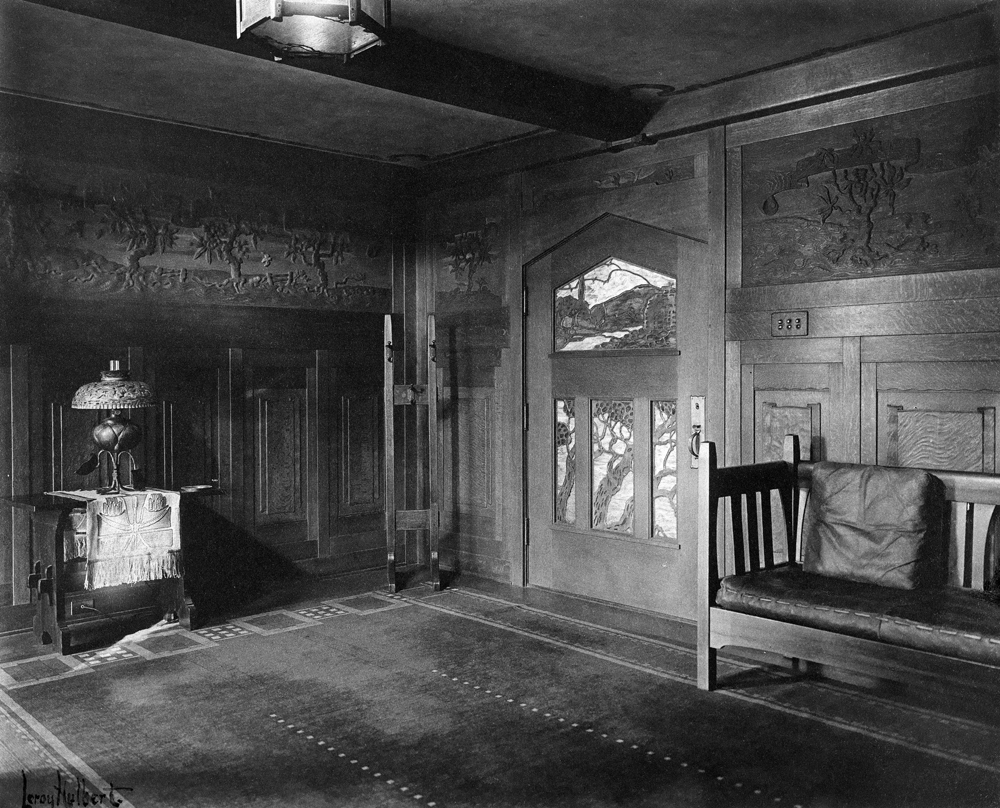Newsletter
The work of the iconic architect brothers Charles and Henry Greene has been well documented for over a century. Their residential designs in Pasadena, California, starting around 1904, are recognized as their most creative masterworks. The Gamble, Thorsen, Culbertson, Pratt, and the spectacular Blacker houses were all built during this relatively short-lived period (1904-1910). The Blacker commission, in particular, gave the Greenes the financial freedom and opportunity to put their distinctive and eclectic design vocabulary on full display. Metal and wood light fixtures, leaded-glass panels that enhanced doors and windows, and, incredibly, more than fifty pieces of furniture, all of their own design, graced the 12,000 square foot estate.
The TRRF was given the unique opportunity to acquire three extremely rare examples of furniture from the Blacker house. All are in original and pristine condition and represent not only the creative genius of Greene & Greene, but also the ideals, philosophy, and principles of the Arts and Crafts Movement itself.

Greene & Greene Chiffonier, ca. 1908, 65 ⅝ x 55 x 27 ¾ in. Produced in the workshop of John and Peter Hall, Pasadena, California. |

Greene & Greene Vanity, ca. 1908, 70 x 55 x 25 in. Produced in the workshop of John and Peter Hall, Pasadena, California. |
Greene & Greene designed the chiffonier and matching vanity (both circa 1908) for the dressing room of the Blacker House. The chiffonier is listed in a house inventory from the 1940s, and an original design drawing is found in Charles Sumner Greene’s papers at the University of California, Berkeley. Both pieces possess the artistically inspired use of Honduran mahogany, ebony, mirrored glass, patinated brass hardware, copper, pewter, and mother-of-pearl and ash inlays, and represent both a utilitarian demonstration of furniture as well as two wonderful examples of architectural art.
Living Room Sofa
“Perhaps even more than the Greenes’ furniture in other rooms of this house, the living room furniture was conceived as a functional, decorative ensemble integrated with the architecture.” - David Cathers, Arts and Crafts Furniture From The Collection of the Two Red Roses Foundation, 2015.
Greene & Greene also designed two known sofa models for the living room of the Blacker House. The TRRF’s sofa was likely conceived and produced around 1913, during which time several other modifications were made to the house by the Greenes at the request of the Blackers. The use of strategically appointed ebony inlays, upturned armrest corners, and straight legs with a distinctive U-shaped design above the sofa feet all work together seamlessly, fashioning yet another remarkable example of living room furniture. Once again, Greene & Greene have used the combination of extraordinary design, exotic woods, and impeccable craftsmanship to create a timeless work of art.

Greene & Greene Living Room Sofa, ca. 1913, Honduran mahogany, ebony, silk. Produced in the workshop of John and Peter Hall, Pasadena, California.
Architecture, Art, and Design: MAACM’S Commitment
So rare and historically important are the architectural works in the TRRF collection, each designed by a select group of architects from the Arts & Crafts period, that all of the galleries on the second floor of the future Museum of the American Arts and Crafts Movement will be devoted to their inspired designs and perfect execution.
Painstakingly and methodically acquired over nearly two decades, the collection includes many of the very best objects designed by early twentieth century architectural legends including Greene & Greene, Frank Lloyd Wright, George Niedecken, George Maher, and Louis Sullivan.

An archival image of the entry hall of the James A. Culbertson house in Pasadena, California.
Reconstructed in its entirety in the Greene & Greene section of the second floor gallery, will be the fully restored entry hall of the James A. Culbertson House built in Pasadena in 1902. The complete room, consisting of ornately-carved redwood oak panels and elegant oak wall paneling, was acquired by TRRF in 2004, and the entire room has been reassembled using the original plans, as well as existing vintage photography, to assure its historical accuracy. All the furnishings that appeared in the vintage images of the hall from 1907 have been acquired to make the room historically complete. Original work by Gustav Stickley, including a 1901 divan and an early costumer, a Stickley Brothers lamp table, as well as period lamps, clocks, and a vintage phone will also be on display. A meticulous period-reproduction chandelier and entry door have been fabricated by a California Stained Glass studio. The effect of this wholly reconstructed Greene & Greene entry hall is expected to be one of the highlights of the new museum.